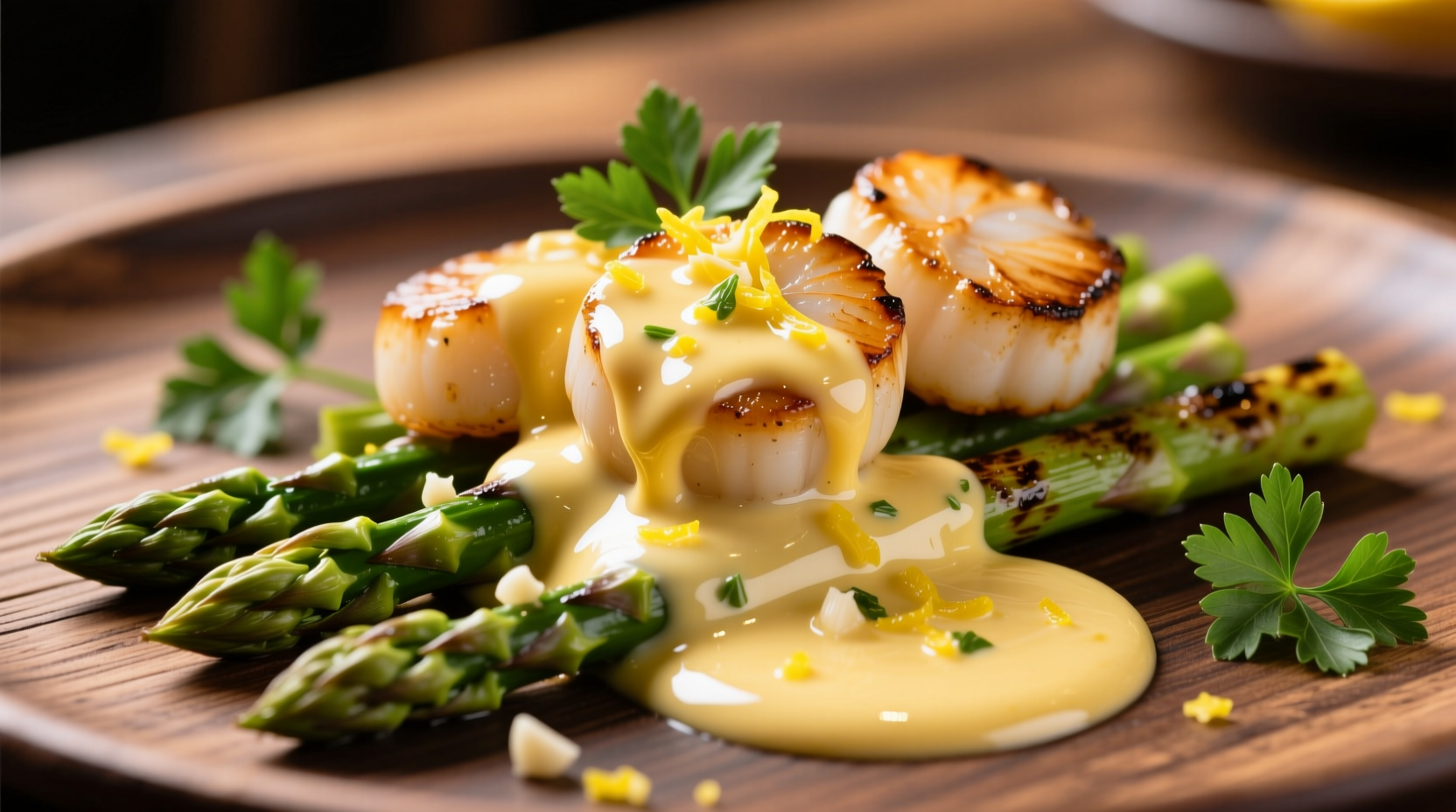Unlock the secret to creating the perfect lemon garlic butter sauce that won't break or separate. As a professional chef with extensive experience in sauce chemistry, I've refined this classic preparation method to guarantee smooth, velvety results every time. Whether you're finishing a delicate piece of grilled fish or enhancing roasted vegetables, this foundational sauce technique transforms ordinary meals into extraordinary culinary experiences.
The Science Behind Perfect Emulsification
Understanding the chemistry of your lemon garlic butter sauce prevents common failures. Butter contains 80% fat and 15-18% water, while lemon juice is primarily water and acid. When properly combined, these ingredients form a stable emulsion where fat droplets disperse evenly through the aqueous phase. The key is temperature control and gradual incorporation.
According to the Culinary Institute of America's food science research, successful emulsification occurs when cold butter is added incrementally to warm (not hot) liquid. Exceeding 140°F (60°C) causes the emulsion to break as the butterfat separates from the water content.
| Emulsion Stage | Temperature Range | Visual Indicator | Common Mistake |
|---|---|---|---|
| Initial Mixing | 100-110°F (38-43°C) | Smooth, slightly thickened | Adding butter too quickly |
| Mid-Process | 110-120°F (43-49°C) | Ribbons form when drizzled | Overheating the base |
| Final Stage | 120-130°F (49-54°C) | Coats back of spoon | Adding cold ingredients |
Step-by-Step Preparation Guide
Follow this professional method for flawless results:
- Prepare ingredients: Mince 3 garlic cloves finely (½ tablespoon), zest 1 lemon, and juice 2 lemons (about ¼ cup)
- Create flavor base: Sauté garlic in 1 tablespoon olive oil over low heat for 60 seconds until fragrant but not browned
- Add liquid components: Pour in lemon juice and zest, plus ¼ cup warm chicken or vegetable stock
- Reduce mixture: Simmer gently for 3-4 minutes to concentrate flavors
- Emulsify with butter: Remove from heat and whisk in 1 cup (2 sticks) cold unsalted butter, 1-2 tablespoons at a time
- Season and finish: Add salt to taste and optional fresh herbs like parsley or chives

When This Sauce Works Best (and When It Doesn't)
Understanding context boundaries prevents culinary disappointment. This versatile sauce excels with:
- Delicate white fish (halibut, cod, sea bass)
- Grilled or roasted chicken breasts
- Steamed asparagus or green beans
- Pasta dishes featuring seafood
However, avoid using lemon garlic butter sauce with:
- Strongly flavored red meats (beef, lamb)
- Dishes already containing competing citrus elements
- Recipes requiring extended simmering after sauce addition
- Any preparation where temperature will exceed 140°F after sauce incorporation
Historical Evolution of Butter-Based Sauces
Lemon garlic butter sauce represents a modern evolution of French beurre blanc technique. This culinary timeline shows how professional kitchen practices influenced today's accessible home cooking method:
- 1830s: French chef Marie-Antoine Carême develops beurre monté, establishing foundational emulsion principles
- 1920s: Beurre blanc emerges in the Loire Valley, originally using vinegar instead of lemon
- 1970s: American chefs adapt the technique, incorporating fresh lemon juice for brighter flavor profiles
- 1990s: Simplified versions enter mainstream cooking shows, making the technique accessible to home cooks
- Present: Modern variations balance acidity and richness for versatile application across multiple cuisines
Common Mistakes and How to Fix Them
Even experienced cooks encounter issues with lemon garlic butter sauce. Here's how to troubleshoot:
- Sauce breaks/separates: Create an emergency emulsion by whisking 1 tablespoon warm water with 1 teaspoon Dijon mustard, then slowly incorporating the broken sauce
- Garlic burns: Always cook garlic over low heat and add it after oil is warm but not smoking
- Too acidic: Balance with additional butter or a pinch of sugar, never by reducing lemon juice after emulsification begins
- Too thin: Reduce the base liquid further before adding butter, or create a small roux to thicken
Variations for Different Dietary Needs
Adapt this classic sauce for various dietary requirements without sacrificing flavor:
- Dairy-free: Substitute butter with vegan butter alternative and add 1 teaspoon nutritional yeast for depth
- Lower fat: Replace half the butter with reduced-sodium chicken broth thickened with a cornstarch slurry
- Extra flavor dimension: Add 1 tablespoon capers or 2 teaspoons anchovy paste for umami richness
- Herb-infused: Steep fresh herbs (tarragon, dill, or chives) in the warm base before adding butter
Storage and Reheating Guidelines
Proper handling maintains quality and ensures food safety. According to USDA food safety guidelines, dairy-based sauces require careful temperature management:
- Refrigerate within 2 hours of preparation in an airtight container
- Consume within 3-4 days for best quality and safety
- To reheat, use a double boiler method over low heat, whisking constantly
- Never microwave directly, as uneven heating causes separation
- Freezing is not recommended as emulsion breaks during thawing
Perfect Pairing Suggestions
Elevate your meals with these professional pairing recommendations:
- Seafood perfection: Drizzle over pan-seared scallops with a side of lemon-roasted asparagus
- Poultry enhancement: Spoon over grilled chicken breasts alongside roasted fingerling potatoes
- Pasta upgrade: Toss with linguine, shrimp, and cherry tomatoes for a quick seafood pasta
- Veggie transformation: Serve with roasted Brussels sprouts or grilled artichoke hearts











 浙公网安备
33010002000092号
浙公网安备
33010002000092号 浙B2-20120091-4
浙B2-20120091-4